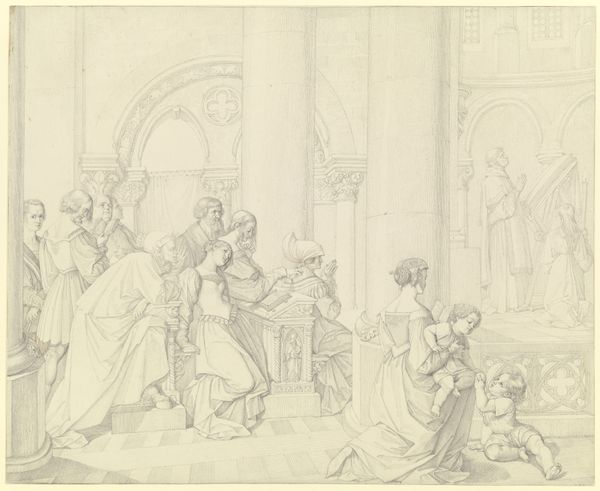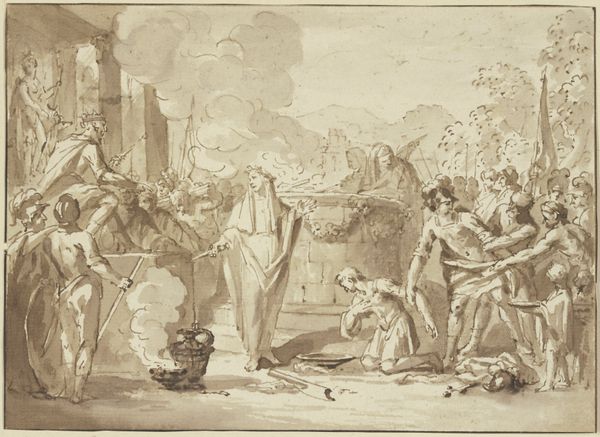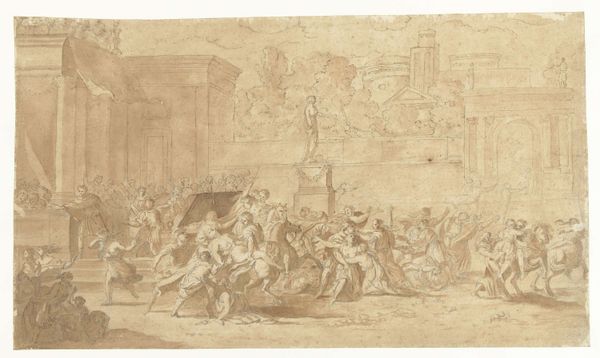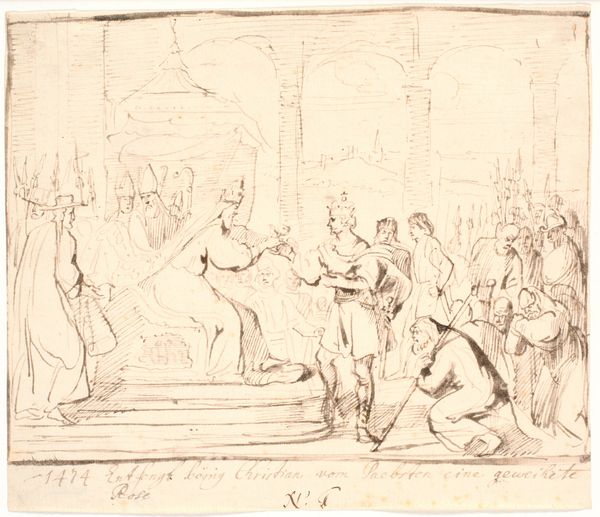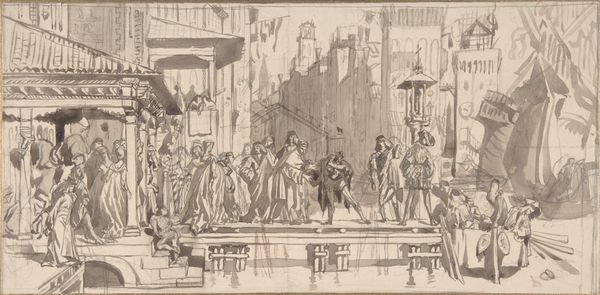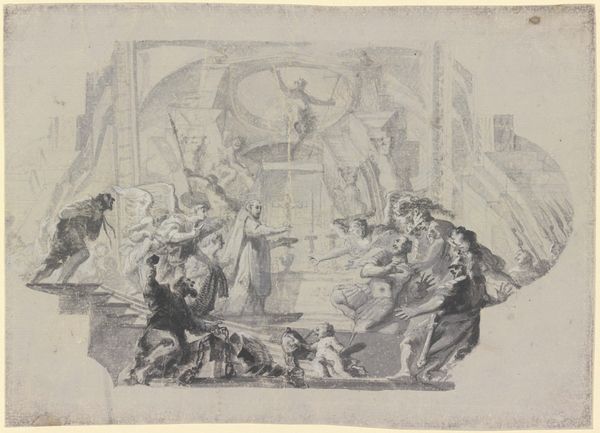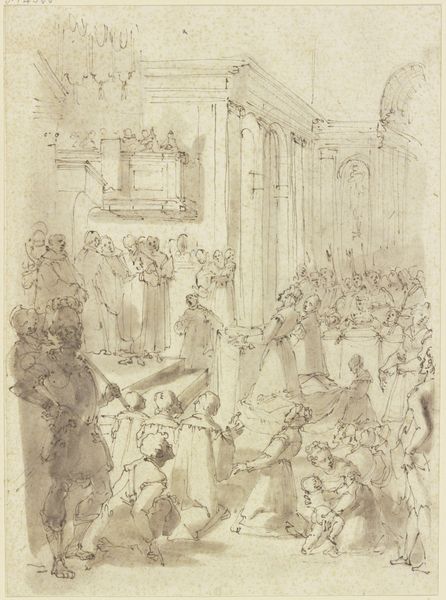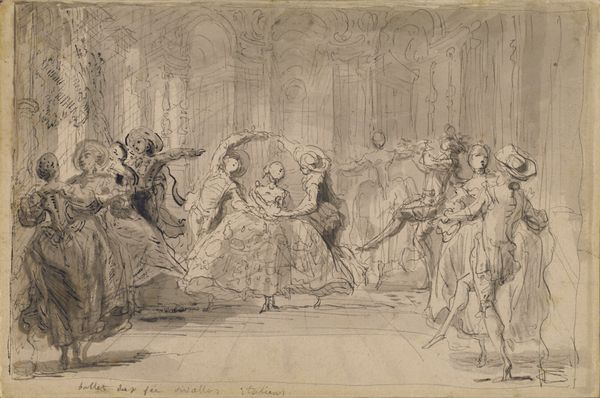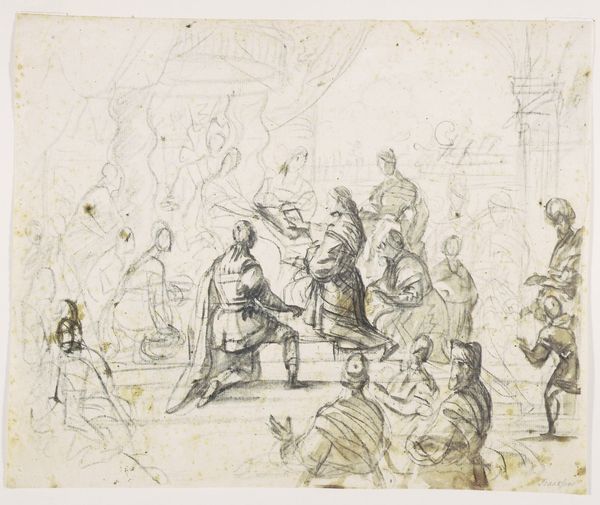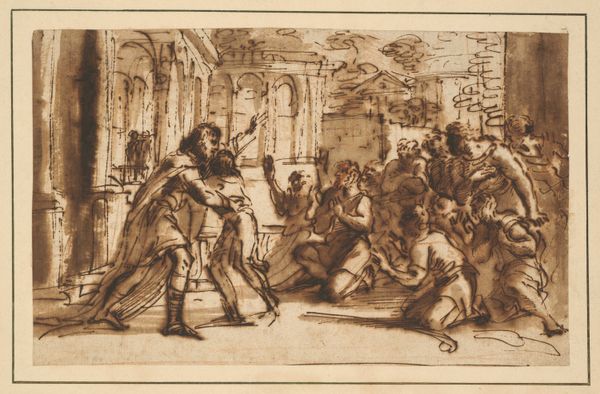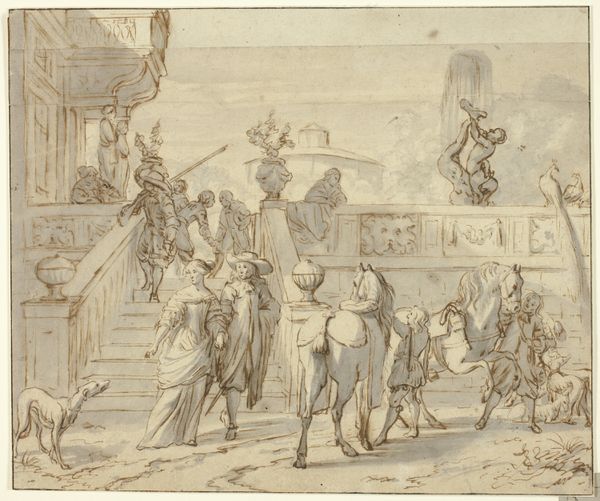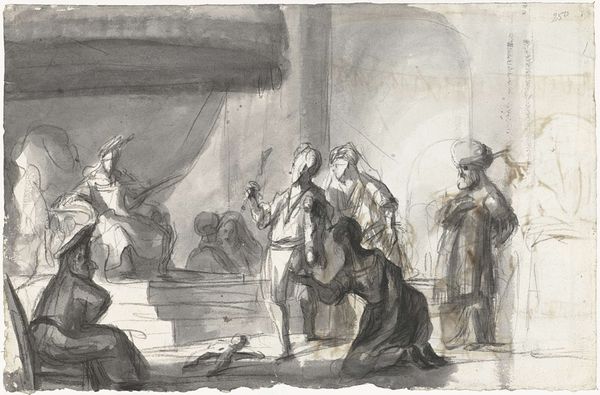
Hertug Frederik III af Gottorp med gemalinde som grundlæggere af fire kongelige og fyrstelige huse 1654 - 1754
0:00
0:00
drawing, ink
#
drawing
#
ink drawing
#
baroque
#
ink
#
group-portraits
#
history-painting
Dimensions: 175 mm (height) x 223 mm (width) (bladmaal)
Curator: This is "Hertug Frederik III af Gottorp med gemalinde som grundlaeggere af fire kongelige og fyrstelige huse" – translated, Duke Frederik III of Gottorp and his consort as founders of four royal and princely houses. Juergen Ovens created this ink drawing sometime between 1654 and 1754. Art Historian: It’s grand, isn't it? Yet also fleeting, a captured moment. The swirling ink creates an atmosphere of celebration and maybe even anxiety. A lot is going on here... Curator: Absolutely. What interests me immediately is the process – the thin washes of ink, the visible sketch lines. You can see the artist building up the composition layer by layer, it’s almost like a record of decision making. It hints at mass production, which is interesting considering this seems to glorify royal power. Art Historian: Oh, undoubtedly! Those figures floating overhead, those cherubs emerging from clouds – divine approval is written all over this piece. The Duke and his consort are being elevated, placed in the context of legacy and dynasty. Curator: I wonder about the paper itself, and what sort of ink was being used and by whom, this kind of detailed historical painting production shows an economic reality for an artisan workshop somewhere in the 17th or 18th century, Art Historian: Notice the repeated motifs, the crown replicated across several figures suggesting the interconnectedness and consolidation of royal lines. Those architectural backdrops too; solid, Roman, designed to evoke longevity, tradition and legitimacy. Curator: Indeed. And think about where it was produced versus its final display. Was this meant to be circulated widely or was it privately held? Was it ever translated into engravings or prints for popular consumption? All clues to understanding production versus reception. Art Historian: It makes me think of those carefully crafted family trees, where lineage is almost as powerful as territory. And I suspect the relatively subdued colour palate serves to enhance, not detract from, that emphasis. The drawing technique allows an idea of their legacy to take centre stage Curator: For me, analyzing how something is made allows us to think critically about what its meant to represent. I found it quite fascinating how a drawing such as this example represents social contexts about wealth. Art Historian: I'm more taken with the lasting echoes of symbols – those cherubs continue to float through our visual vocabulary. Seeing them there connects us to past interpretations and assumptions around power.
Comments
No comments
Be the first to comment and join the conversation on the ultimate creative platform.
